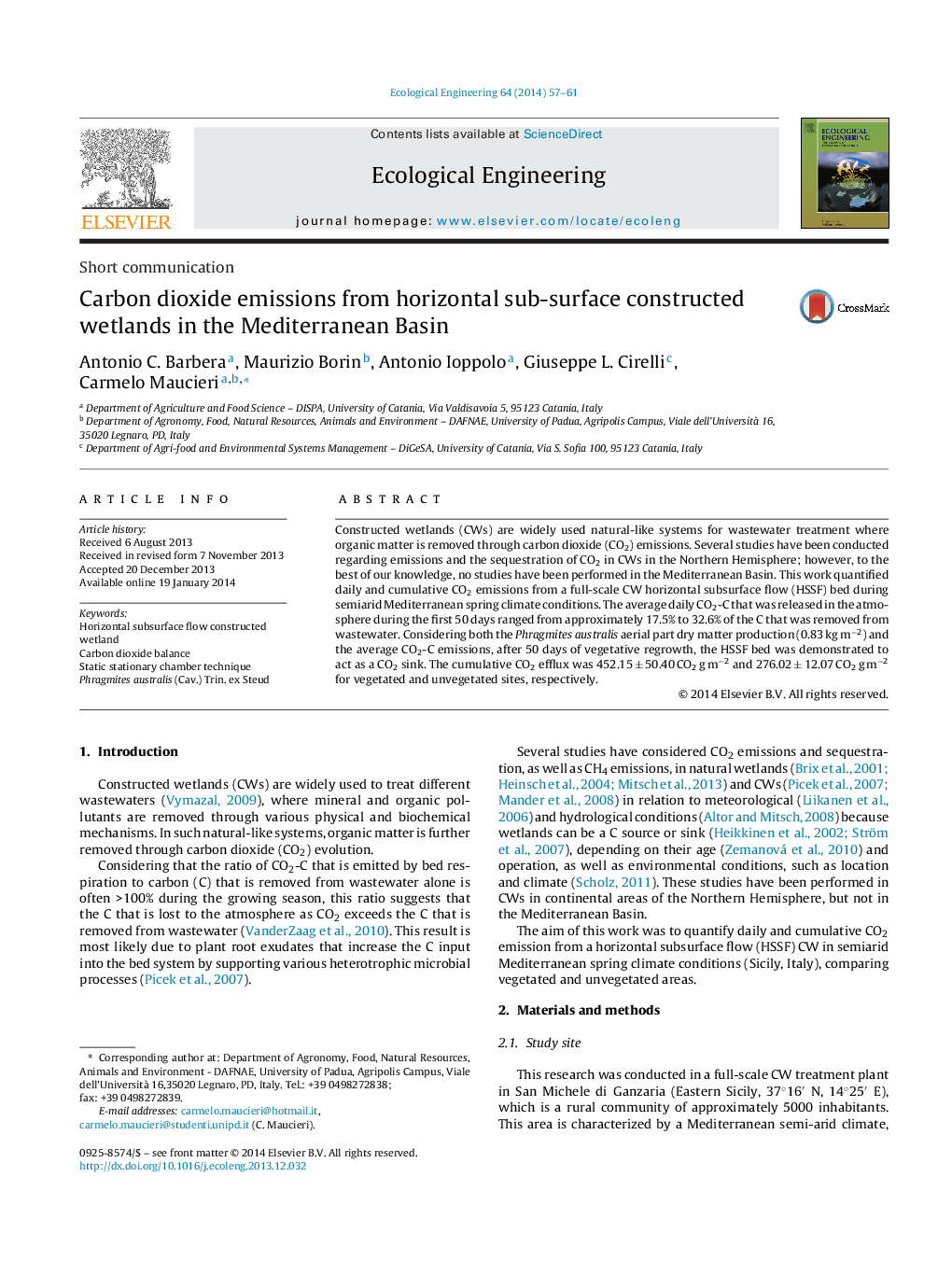| Article ID | Journal | Published Year | Pages | File Type |
|---|---|---|---|---|
| 4389562 | Ecological Engineering | 2014 | 5 Pages |
•Constructed wetland vegetated areas showed higher CO2 emission than unvegetated one.•The vegetated areas showed higher CO2 emissions in the middle part of the bed.•CO2-C released in the atmosphere was higher than the C removed from wastewater.•In the spring experimental conditions constructed wetland acts as a CO2 sink.•Constructed wetland showed a high COD and TSS removal efficiency.
Constructed wetlands (CWs) are widely used natural-like systems for wastewater treatment where organic matter is removed through carbon dioxide (CO2) emissions. Several studies have been conducted regarding emissions and the sequestration of CO2 in CWs in the Northern Hemisphere; however, to the best of our knowledge, no studies have been performed in the Mediterranean Basin. This work quantified daily and cumulative CO2 emissions from a full-scale CW horizontal subsurface flow (HSSF) bed during semiarid Mediterranean spring climate conditions. The average daily CO2-C that was released in the atmosphere during the first 50 days ranged from approximately 17.5% to 32.6% of the C that was removed from wastewater. Considering both the Phragmites australis aerial part dry matter production (0.83 kg m−2) and the average CO2-C emissions, after 50 days of vegetative regrowth, the HSSF bed was demonstrated to act as a CO2 sink. The cumulative CO2 efflux was 452.15 ± 50.40 CO2 g m−2 and 276.02 ± 12.07 CO2 g m−2 for vegetated and unvegetated sites, respectively.
